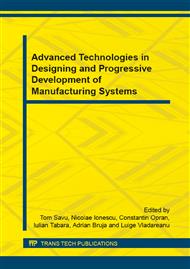p.627
p.633
p.639
p.645
p.651
p.659
p.665
p.671
p.677
Mathematical Modeling of Non-Destructive Testing for Layered Materials
Abstract:
This article deals with mathematical modeling of non-destructive testing of layered materials. Latest research in the nondestructive control modeling with ultrasound waves recommends, for a greater productivity, the use of layer waves Lamb type due to their properties to propagate in solid materials on long distances without any significant attenuation. In the first part it is shown and justified the usage of the choice of Lamb waves to control this type of material. Then follows the theoretical aspects of the modeling and the simulation of the propagation of Lamb waves in layered materials using the mathematical formalism of wave propagation characterization with a vector of type S called slowness vector. Afterwards the mathematical results are presented with the equation of motion within the considered hypothesis, the hypothesis determined in any point of the space of important acoustic parameters in nondestructive testing (in particular the amplitude of the reflected wave quasi-longitudinal wave) based on the known characteristics of the incipient vector (initial impulse). Then follows validation of the developed model based on some simulations using a specialized software. Finally conclusions are presented and prospects for the development of the method.
Info:
Periodical:
Pages:
651-656
Citation:
Online since:
May 2015
Authors:
Price:
Сopyright:
© 2015 Trans Tech Publications Ltd. All Rights Reserved
Share:
Citation:


